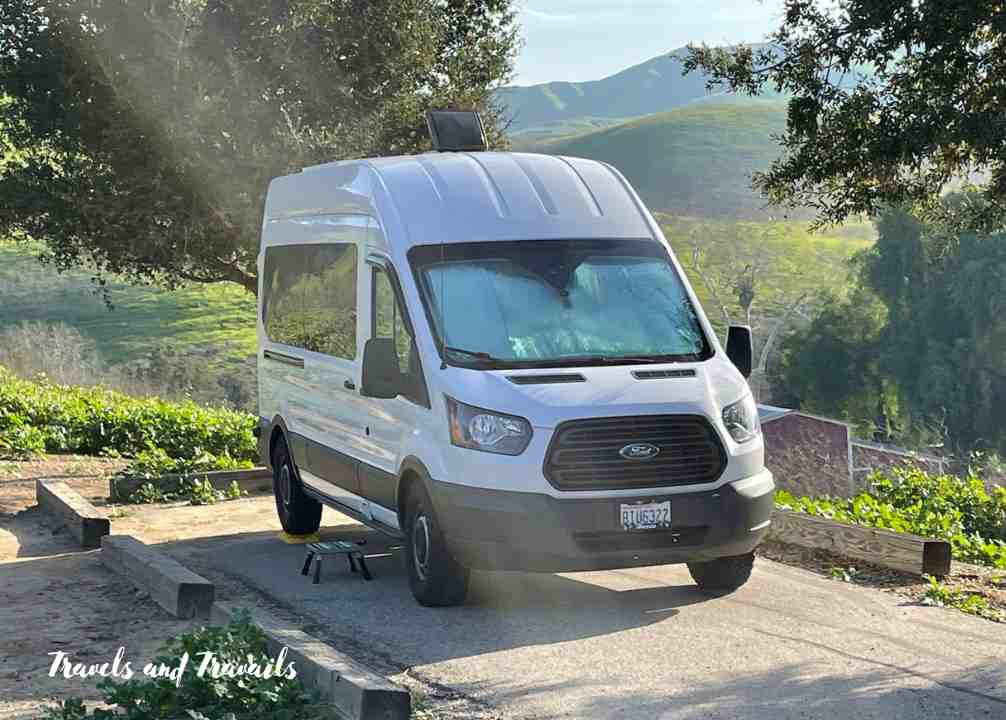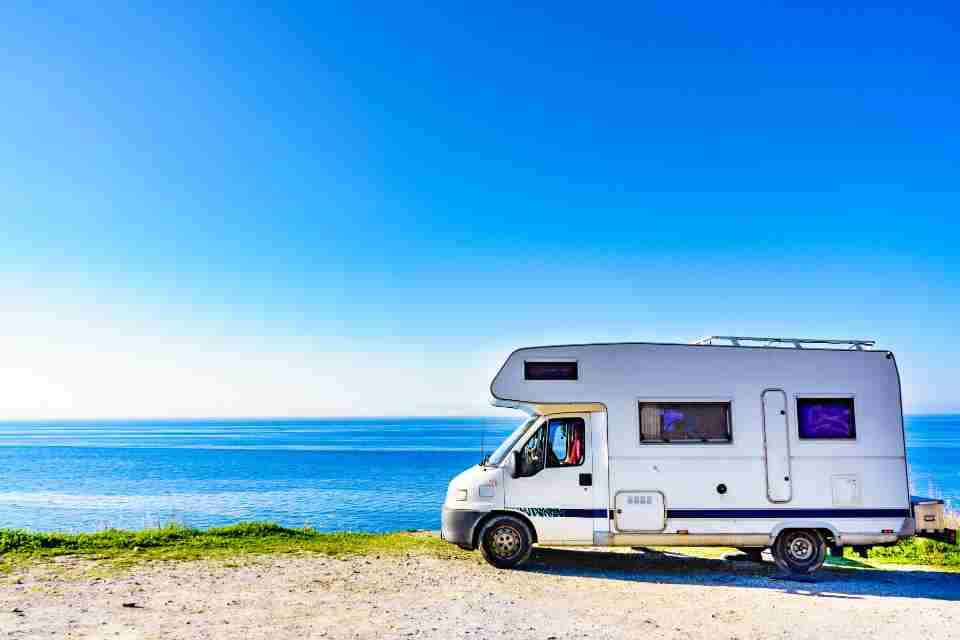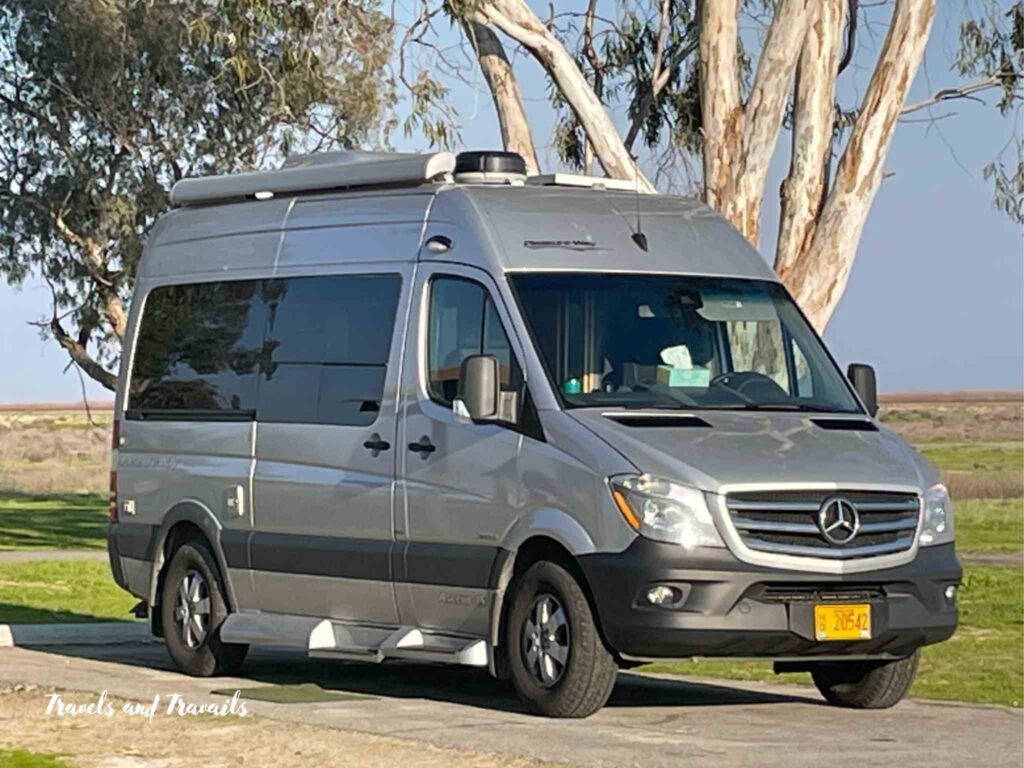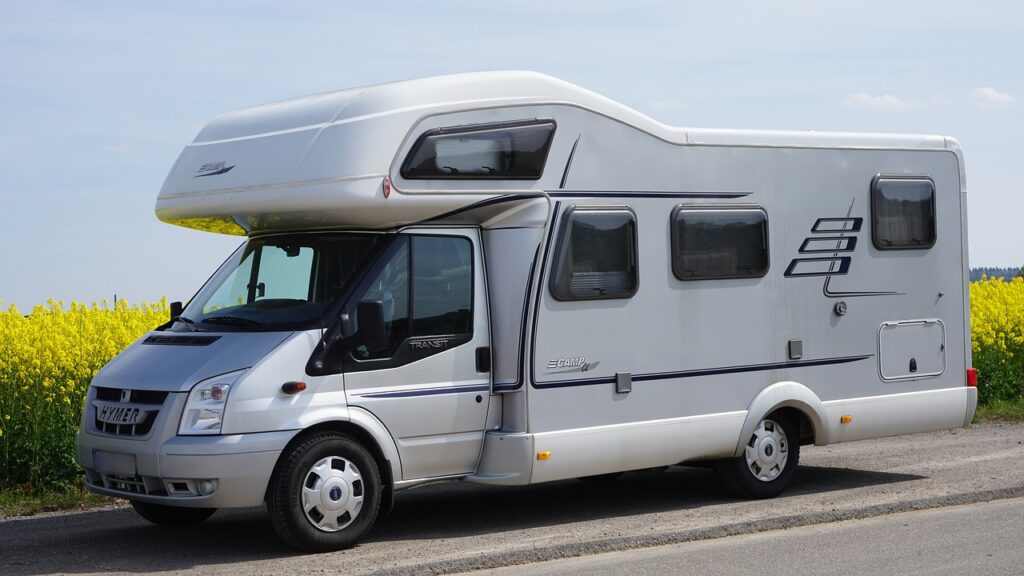Unless you have a huge family or friend group, you’ll probably eschew Class A RVs in favor of a smaller (but still very spacious) Class B or Class C. However, you’re having a hard time deciding between the two. Will you enjoy more adventures on the road in a Class B or Class C motorhome?
Class B and Class C motorhomes both have their advantages, with the largest benefit of a Class C being the additional space. If you travel lighter or in smaller groups and enjoy boondocking, you might find a Class B RV more suitable for you.
This guide is designed to get you off the fence. Ahead, I’ll talk further about the advantages and disadvantages of Class B and Class C RVs so you can choose one!
What Is a Class B Motorhome?

Before I compare pros and cons, I want to make clear what separates these two types of RVs, and I can only do that with an explanation.
Let’s begin by talking about Class B. Known as a camper van, of the three RV classes, Class B is the smallest.
I know, you would think that if Class A is the largest, Class C would be the smallest, and Class B would be the in-between option, but that’s not the case. Class C is the in-between option, and Class B is the smallest.
So how small are we talking about here? A Class B motorhome is about eight feet wide, nine to 11 feet tall, and 17 to 23 feet long. A vehicle of this size weighs 6,000 to 11,000 pounds.
Class Bs are intimate vehicles designed for at least two people and no more than four. The vehicle will feature the amenities you need, but not to the same extent as a Class C and certainly not like a Class A RV.
Some Class B RVs may have slide-outs, but you’re likelier to find this feature in larger motorhomes. At the very least, you should expect one bathroom, at least one bedroom nook, and a galley kitchen.
Your vehicle might include an auxiliary generator, an entertainment center and television, a power inverter, air conditioning and heating, and a shower.
The base of a Class B motorhome is a panel truck or van. That makes adjusting to driving an RV of this size quite easy.
What Is a Class C Motorhome?

Now let’s switch gears and discuss Class C motorhomes.
As mentioned in the last section, a Class C RV is the second-largest of the three motorhome classes behind the esteemed Class A. The average size of a Class C motorhome is 21 to 41 feet long.
You can go bigger still and be in Class C territory if you buy what’s known as a Super C. Still smaller than a Class A RV (although not by much), a Super C has a greater towing capacity, bigger chassis, and more weight than a standard Class C motorhome.
Compact Cs have a cutaway chassis and a much smaller frame akin to a Class B motorhome.
Getting back to regular Class Cs, these vehicles weigh 10,000 to 12,000 pounds. They’re not significantly heavier than Class B motorhomes but do afford far more room. You can easily sleep four to eight people in one of these vehicles.
Class C RVs often feature a raised storage or sleeping area over the vehicle’s cab. That’s just part of how a Class C offers more space than a Class B.
Compared to Class A motorhomes, a Class C wins in the gas mileage department because it’s smaller.
Class B Motorhome Pros and Cons

Now that you better understand the differences between Class B and Class C motorhomes, let’s investigate the pros and cons of both RV classes.
I’ll start with Class B motorhomes.
Pros
1. Easy to Drive
When driving an RV, it’s often like your teenaged days when you first got behind the wheel…you know, except the vehicle you’re driving weighs thousands of pounds more and is a lot larger.
That’s part of what makes driving an RV challenging, at least initially. Like anything, the more you do it, the more you’ll adjust, but that adjustment period is tough.
If you opt for a Class B motorhome, you can skip the adjustment period. The size of this vehicle is comparable to a van, so if you’re used to driving vehicles of that size, you can easily transition to a Class B.
You’ll feel readier to hit the road on that big trip sooner!
2. More Convenient Than a Trailer
Class B motorhomes are about the same size as a larger travel trailer but offer a variety of advantages.
Since everything is part of the vehicle, you don’t have to worry about hitches or tongue weight. When you’re on the road, you needn’t stress about trailer sway or jackknifing.
Plus, your entire vehicle is operational when driving, the same of which you can’t say if you drove a travel trailer. For example, other passengers in your RV can grab a snack from the fridge or use the bathroom while you drive.
3. Might Fit in Your Garage During the Off-Season
Unless you live in a southern state where the weather never gets overly cold, you’ll have to leave your RV for a couple of months each year. Where you’ll store the vehicle during the off-season becomes a big concern as winter approaches.
Off-season storage can get expensive fast, so if you have the opportunity to keep your RV close, you should take it. With a Class B motorhome, that’s exactly the opportunity you have.
The tidy size of most Class Bs allows you to store them in your garage during the off-season. You can check on your vehicle as often as you want, keeping it ready to go for the spring.
4. Great for Driving in Tight Situations
Do you have to parallel park, do a K-turn, or navigate down a narrow street? In those kinds of scenarios, a smaller motorhome is always better than a larger one. You’ll be very grateful you chose a Class B!
Cons
1. The Smallest of the Three RV Classes
I know I haven’t made it a secret this entire time, but I do want to talk further about how a Class B is the smallest RV class available.
Depending on how you view minimalism, you might find this advantageous or a huge disadvantage.
2. Less Storage Space
The smaller a motorhome, the less storage space available. Now, since you only have four people in your vehicle max, you shouldn’t need as much storage space as a Class C RV that can hold up to eight people.
That said, more storage space is always better than less. Even if you do have fewer people in your vehicle, more space allows you to store more in your RV and camp out for longer.
3. Fewer Passengers
If you have a big family or you enjoy camping with your large group of friends, a Class B motorhome won’t suffice. You simply don’t have enough room for all your passengers, and who wants to be that person who tells certain people they have to stay home?
Class C Motorhome Pros and Cons

Now let’s switch gears and discuss Class C motorhomes, beginning with what’s great about them and then what’s not so great.
Pros
1. Good Towing Capacity
Class C motorhomes can tow up to 8,000 pounds. In that regard, they’re like a larger toy hauler, as you can easily bring kayaks, bikes, or ATVs with you to make the most of all your adventures.
2. Easy to Maintain
Since most Class C RVs use a truck chassis, the vehicle usually features engines and parts from major truck manufacturers such as Chevrolet or Ford.
When the time comes to maintain your vehicle and even replace parts, you shouldn’t struggle to do this nearly as much as you would with a Class A. You’ll find that the parts are readily available and usually cost-effective too.
3. Available in a Range of Sizes
Class C RVs sort of have their own sub-classes. You can try a compact C if you want a smaller Class C but need more space than what a Class B affords.
For those RV shoppers who aren’t interested in a Class A but long for more space out of their Class C, you can try a Super-C RV. There’s an option for everyone!
4. Lots of Spaciousness
If you select a standard-sized Class C motorhome or a Super-C, you will certainly not want for space.
All the room afforded to you gives you more floor plan variability than what you’ll see in a Class B RV. You can configure floor plans to include all the must-have amenities you crave, including full bathrooms, large bedroom areas, and complete kitchens.
You’ll also have more storage space than you can shake a stick at and more than enough sleeping space!
Cons
1. Not the Best MPG
As you get into larger motorhomes, their MPG suffers. That’s the case with a Class C RV, as it is with a Class A.
You won’t get as much bang for your buck when fueling up. Considering that it’s already so costly to pay at the pump today, you’d have to pay even more when driving a Class C motorhome might be enough to dissuade you from purchasing.
2. May Take Some Getting Used to When Driving
In the last section, I discussed how easy it is to get behind the wheel of a Class B motorhome and drive it in short order. If you were hoping for the same luck with a Class C RV, you might be disappointed.
I say “may” because it depends greatly on your driving experience. If you’ve towed trailers or driven larger vehicles like commercial trucks, you can easily adjust to driving a Class C motorhome.
However, if a Class C will be your first RV and the largest vehicle you’ve ever driven is an SUV, you will have to expect a bit of a learning curve.
3. Harder to Navigate in Some Situations
The width and length of a Class C RV in relation to a Class B also pose challenges when driving.
When you find yourself in those tight situations, such as a parking spot with cars on both sides, you will have your work cut out for you when driving a Class C motorhome. That also goes for techniques like parallel parking and K-turning.
Are Class B or Class C RVs Better?
Now it’s time to answer that most burning question, is a Class B or Class C motorhome the better choice?
Even with all the information I’ve presented to this point, allow me to make it clear that there is no one right answer.
If you like a smaller motorhome for boondocking or just the intimacy of traveling with another person or two, you should purchase a Class B RV.
Even with its “flaws,” such as a smaller size and less variability in floor plans, you should have commensurate storage space with the size of the vehicle.
You’ll also be able to drive a Class B RV more easily, parking it won’t give you headaches, and finding a place to keep your motorhome in the offseason won’t be a struggle either.
If you want a larger motorhome than a Class B, you don’t have to automatically jump to Class A. The Class C motorhome is a good in-between. It’s larger than a Class B but not quite as big as a Class A for easier driving and maneuverability.
You’ll have more amenities, lots of storage space, more floor plan options, and greater towing capacity.
However, you will have to sacrifice good MPG, narrow driving scenarios, and the freedom to keep your RV in your garage in the off-season (unless you have a very large garage!).
Conclusion
Class B and C motorhomes are some of the most beloved on the market for their manageable size and reasonable expense (compared to buying a Class A motorhome new, at least).
If you’ve found yourself torn between these two RVs, I hope the handy information in this guide helps you decide which one is best for you!
